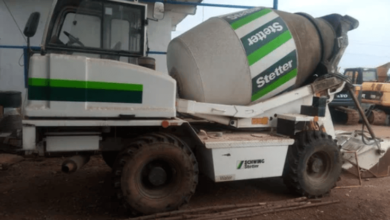Navigating Your Future: How to Buy Property with Super Funds

Securing a financially stable future is a common aspiration among many individuals. One innovative approach to achieving this is incorporating property investment within your retirement planning strategy, particularly through a Self-Managed Superannuation Fund (SMSF). This article will guide you through the intricacies of how to buy property with super funds and outline the considerations and steps involved in this process.
Understanding SMSF Property Investment
An SMSF is a private superannuation fund that you manage yourself, which can be an effective vehicle for wealth accumulation. One of the advantages of an SMSF is the ability to include direct property investment as part of its investment portfolio. However, this requires meticulous adherence to the rules and laws as set out by the Australian Taxation Office (ATO) and the Superannuation Industry (Supervision) Act.
The Benefits of Buying Property with Super
Investing in property through an SMSF can potentially offer tax advantages, including lower capital gains tax upon selling the property during the pension phase, and the ability to reduce your income tax through the deductions related to property expenses. Additionally, combining super resources with direct property investment might provide a stable and diversified income stream for retirement.
Eligibility and Setting Up an SMSF
Before you leap into SMSF property investment, it is crucial to determine whether you’re eligible to set up an SMSF. Members of an SMSF must be trustees or directors of the corporate trustee, ensuring that they have control over the investment decisions. However, being a trustee comes with significant legal obligations, so establishing compliance structures and thorough understanding is critical.
Critical Compliance Rules
Once your SMSF is established, it is bound by specific investment restrictions. Property purchased must meet the ‘sole purpose test’ – that is, it must be solely intended to provide retirement benefits to the fund members. SMSFs are not allowed to acquire residential property from related parties of the fund, and fund members or relatives are prohibited from living in the property.
Choosing the Right Property
When deciding to buy property with super, selection of the right asset is key. It should align with the SMSF’s investment strategy, considering risk tolerances and diversification. The property should also have strong growth potential and provide a reliable rental yield to contribute to the retirement savings of members.
Financing Property Investment through an SMSF
Purchasing property through an SMSF typically requires substantial upfront capital. If your SMSF doesn’t have enough funds to cover the full purchase price, you may consider a limited recourse borrowing arrangement (LRBA). An LRBA allows an SMSF to borrow funds for an investment property purchase, with the property serving as security for the loan.
Property Management and Maintenance
Owning property within an SMSF means handling property management and maintenance duties. This includes finding tenants, collecting rent, and ensuring property upkeep. SMSF trustees can choose to manage these tasks themselves or outsource them to professional property management services.
Understanding the Risks
Investing in property within an SMSF is not free of risks. Illiquidity of real estate, fluctuating property prices, and the potential for rental vacancies are some of the concerns. Additionally, ensuring ongoing compliance with strict SMSF regulatory requirements is crucial to avoid penalties and maintain the favorable tax position of the super fund.
Exiting the Investment
Developing an exit strategy before buying property through an SMSF is as important as the initial investment decision. There may come a time when liquidating the property becomes necessary, whether to rebalance the investment portfolio or to fund retirement. Planning for this eventuality ensures that you can act promptly and advantageously when required.
Seeking Expert Advice
The complexity surrounding SMSFs and property investment means that seeking expert financial and legal advice is paramount. Professional advisors can provide insight into whether an SMSF property investment aligns with your long-term financial goals and assist with the intricate details of setup, compliance, and management of the investment.
Read Also: Maximising Home Comfort: The Essential Guide to Air Conditioning Services in Sydney
Conclusion
Using an SMSF to buy property with super requires a dedicated approach to research, a clear understanding of legal responsibilities, and rigorous financial planning. While this investment route offers significant potential benefits, it is accompanied by considerable financial and regulatory complexities that require careful navigation. Armed with the right knowledge and professional guidance, SMSF trustees can strategically leverage their superannuation for a successful property investment that enriches their retirement prospects.
Embarking on the journey of SMSF property investment, when done prudently, can pave the way for a more secure and comfortable retirement. It is a path that demands diligence and foresight, but for those prepared to navigate the intricacies, the rewards can be substantial and enduring.




